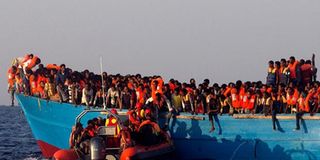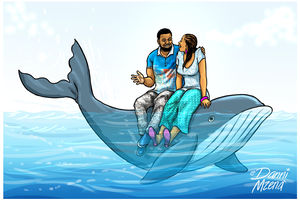Thousands of migrants rescued off Libya

On Sunday more than 1,100 migrants were rescued in the same area.
What you need to know:
Overall, about 284,000 migrants have entered Europe so far this year through various transit routes across Africa, Asia or the Middle East.
About 6,500 migrants have been rescued off Libya, the Italian coastguard says, in one of the biggest operations of its kind to date.
Some 40 co-ordinated rescue missions took place about 20km (12 miles) off the Libyan town of Sabratha, it added.
Video footage shows migrants, said to be from Eritrea and Somalia, cheering and some swimming to rescue vessels, while others carried babies aboard.
On Sunday more than 1,100 migrants were rescued in the same area.
The instability in Libya has made the country a hub for people-trafficking.
Monday's operations involved vessels from Italy as well as the EU's border agency Frontex and the NGOs Proactiva Open Arms and Medecins Sans Frontieres.
The migrants had set off in overcrowded and unseaworthy vessels with enough fuel to reach waiting rescuers, AP reported.
Last year more than 1m migrants - many fleeing the civil war in Syria - arrived in Europe, sparking a crisis as countries struggled to cope with the influx, and creating division in the EU over how best to deal with resettling people.
In March, the EU struck a deal with Turkey to try to stop migrants crossing from Turkey to Greece while Balkan nations closed their borders to migrants, moves that have reduced the number of arrivals using the so-called eastern Mediterranean route.
However, migrants from African countries such as Eritrea and Somalia as well as west African nations such as Nigeria and the Gambia are continuing to attempt the crossing from Libya to Italy.
About 106,000 people have arrived in Italy so far this year while 2,726 have died in the attempt, according to the International Organization for Migration (IOM).
The IOM says there are a further 275,000 migrants in Libya waiting to travel.
Overall, about 284,000 migrants have entered Europe so far this year through various transit routes across Africa, Asia or the Middle East.




